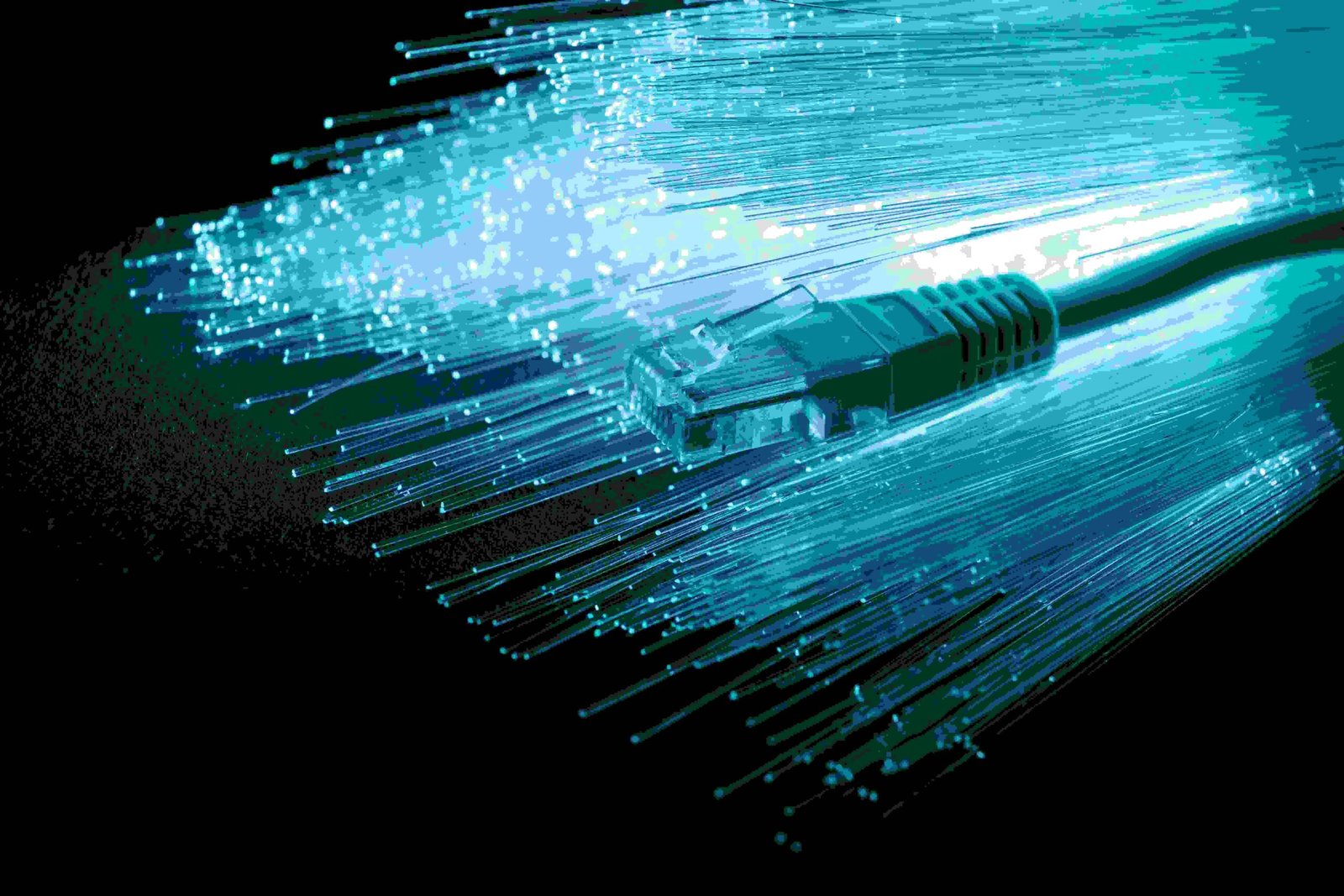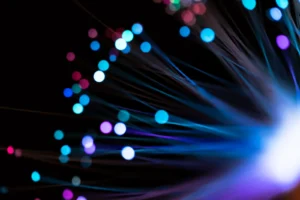Fact: Fiber internet can be 100 times faster than standard broadband.
Fiber internet comes with speeds and reliability that cables and DSL simply can’t match. This is made to meet the growing demands of our digital lives. But, what is fiber internet, what is the difference between fiber and cable internet, why is fiber internet such a powerful tool, and what makes it the best option for both today and the future? Let’s explore it all and more in this blog.
Understanding Fiber Internet Technology
So, what is fiber optic internet? Fiber internet is built on fiber-optic cables. These cables are nothing but thin strands of glass or plastic that carry data as light signals. Each strand is about as thick as a human hair, but together they transmit vast amounts of data at speeds.
This data transmission method delivers incredibly high speeds, typically ranging from 250 Mbps to 1,000 Mbps (1 Gbps). Theoretically, it can reach speeds of 10 Gbps, which puts it miles ahead of conventional broadband.
Bundled fiber-optic cables allow light pulses to move through the core and reflect within. This process, known as “total internal reflection,” keeps data intact over long distances. This helps fiber optics provide steady, high-quality performance with minimal interference.
How Fiber Internet Works
Fiber internet uses a unique structure to deliver high-speed, low-latency internet. Let’s now look at the key components that make fiber networks so reliable:
- Optical Network Terminal (ONT): This device, located at your home or business, converts light signals into data that your devices can use.
- Fiber Distribution Hub (FDH): The FDH serves as a local distribution center and is positioned within neighborhoods or commercial areas. It connects multiple buildings or homes to the main fiber line.
- Optical Line Terminal (OLT): The OLT sends and receives light signals to and from the fiber network. It is located at the central office and acts as the main control point in the network.
Together, these elements provide a smooth, high-speed connection with minimal disruptions. Despite the crowds in urban areas, such light-based transmission provides a stable, efficient connection.
Key Benefits of Fiber Internet
Several benefits make fiber optic internet a top choice. Here are five reasons why this technology stands out:
- Provides equal upload and download speeds for smooth data transfer and real-time communication.
- Better games and video calls with a low latency of 1 to 3 milliseconds.
- Stays reliable and consistent in all weather and resists interference.
- Compared to copper, it consumes less energy and lasts longer.
- Delivers speeds up to 10 Gbps, making streaming, gaming, and large data transfers effortless.
To highlight fiber’s speed advantage, here’s a comparison of common download times:
| File Type | Fiber (1 Gbps) | Cable (100 Mbps) |
| 2-hour HD movie (4.5GB) | 25 to 40 seconds | Up to 5 minutes |
| 9-hour audiobook (110 MB) | 1 second | 9 seconds |
| 5-minute video (30 MB) | 0.2 seconds | 3 seconds |
These benefits make fiber internet an ideal choice for fast and reliable connectivity.
Fiber vs. Cable Internet: What’s the Difference?
To understand what is the difference between fiber and cable internet, we need to compare their features. Here’s a quick breakdown:
| Feature | Fiber Internet | Cable Internet |
| Technology | Light signals via fiber-optic cables | Electrical signals through copper cables |
| Speed Range | 100 Mbps to 10 Gbps | 10 Mbps to 1 Gbps |
| Upload/Download Speeds | Symmetrical (equal upload/download) | Asymmetrical, slower upload speeds |
| Reliability | High, resistant to interference | Moderate, prone to interference |
| Latency | 1-3 ms | 15-40 ms |
| Eco-Friendliness | Lower energy consumption | Higher energy consumption |
| Susceptibility to Interference | Low | High |
Cable internet may suffice for basic browsing, but fiber optics is multiple steps ahead. Its superior performance can handle the data-heavy demands of modern connectivity.

The Future of Fiber Optic Internet
With the growth of 5G, smart homes, and IoT, the demand for fast, reliable internet is only increasing. But, with demands come new advancements. This section talks about what the future has for fiber optic internet:
Expanding Fiber’s Reach
As investment in fiber continues, high-speed connections are set to reach more areas. This narrows the digital divide and supports equal access to digital resources.
The Rise of Li-Fi
Li-Fi (Light Fidelity) is an exciting technology that uses invisible light to transmit data. Paired with fiber, Li-Fi can provide ultra-fast, secure wireless access, especially where radio waves (Wi-Fi) are limited. Previously challenging environments, such as dense urban centers, may now be accessible.
Breakthrough Speeds in Fiber
Researchers are pushing fiber technology to new limits, achieving speeds over 100 terabits per second (Tbps). These advancements let fiber handle the greater data demands of future tech.
With these advancements, the future of connectivity looks promising with unprecedented speed, security, and support for emerging digital innovations. The impact can be seen majorly in high-intensity areas like smart cities and healthcare.
Conclusion
By now, we hope you have a clear understanding of what is fiber optics internet. Fiber internet’s speed and reliability make it essential for today’s connectivity needs. As fiber and Li-Fi technology evolve together, it paves the way for greater connectivity. OLEDComm is at the forefront, ready to support your need for high-speed, secure network goals.
Book a session with our expert to learn more.




